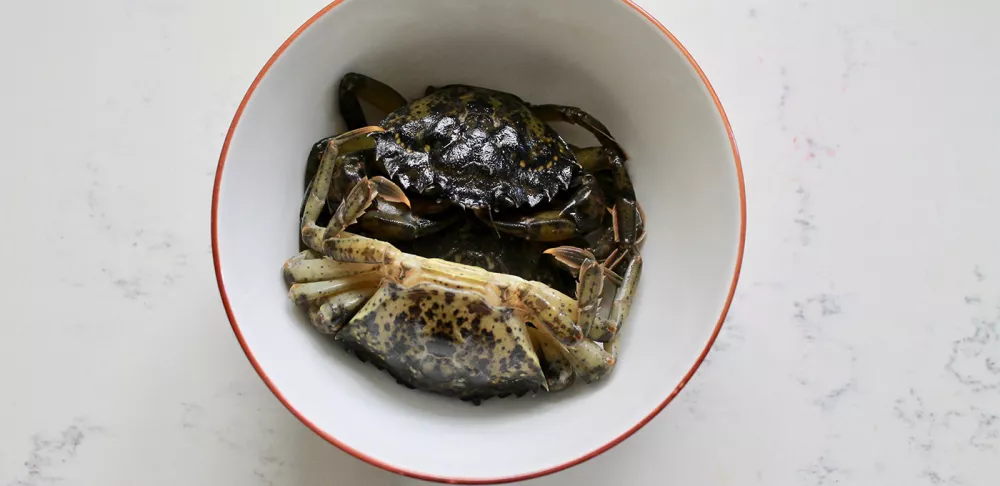Back in January, I got a note from our supplier of Nantucket Bay scallops saying the season was over. I couldn’t believe it. These are one of my favorite things to eat, and the season doesn’t normally end until March (it runs commercially from November to March).
The problem was warmer temperatures (climate change, anyone?), which allow the growth of a toxic algae and an abundance of green crabs. Algae aside, I am no marine biologist, and I was already hearing of this invasive species: the green crab, which is multiplying. This is very bad news for shellfish, from Long Island to the Canadian East Coast (it is also a problem on the West Coast). Green crabs eat the small larval species of scallops, as well as lobsters and other shellfish, and compete with the same food sources. They also feed on eelgrass, which is an important source of food for migratory birds and helps with erosion.
As many green crabs as there are, I don’t see any being sold at restaurants. They aren’t as well known as the blue crab, which has a history along the mid-Atlantic coast and produces the soft shell crab that’s served in the summertime along the East Coast. Plus, green crabs are small, so they don’t yield as much meat to extract.
The population growth has generated a lot of conversation about green crabs and their uses. In Maine, Green Crab Project is trying to help consumers understand how to cook with the invasive species and encourage producers of soft shell crab to get this new product to market. Executive Director Mary Parks and author Thanh Thái wrote “The Green Crab Cookbook” to combat the invasive species by exposing its uses in the kitchen. “The idea now is to eat the green crabs as a way to get rid of them,” wrote Florence Fabricant in The New York Times.
Two Brooklyn seafood destinations have been working with the Green Crab Project to help eradicate the predatory crabs. Chef Alex Raij hosted a Venetian green crab dinner at her restaurant, Saint Julivert, on July 15, and the team at Greenpoint Fish & Lobster Company has been serving specials featuring soft-shell green crabs, including the grilled green crab roll below, at its restaurant. “One of our goals is to serve ecologically friendly options to better support our [planet],” the company posted on its Instagram.
Purveyors and chefs have long led efforts to combat invasive species through dining, from lionfish in Florida and wild blue catfish in the Chesapeake Bay to invasive plants in Hawaii, such as kiawe and waiawi.
Join me on Aug. 8 for a discussion about the history of green crabs and a demonstration on how to cook the invasive species at the Institute of Culinary Education. I’ll share how to make a wonderful broth to use in soups and sauces, how to prepare soft shell green crabs, which are very popular in Venice, Italy and Vietnam, and how to use the caviar. Guests will receive a free copy of "The Green Crab Cookbook."




